Opinion
Valorising mythology to invalidate known history
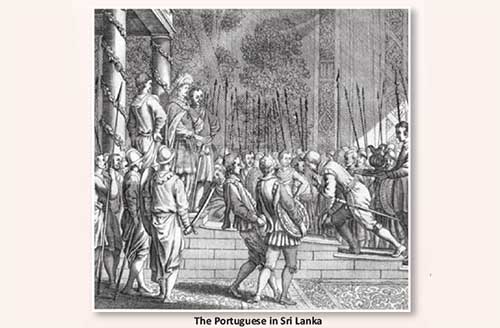
By ROHANA R. WASALA
Feisal Mansoor (‘Muslims and ban on cattle slaughter’/The Island/October 9, 2020) opens his piece with a quote from Mahatma Gandhi, obviously taken from the web: “The greatness of a nation and its moral progress can be judged by the way its animals are treated.” However, there is some doubt about the authenticity of that alleged Gandhi quote, because it is not traceable to his writings or his speeches according to quote-researchers; besides, he was usually better known for his great concern for the weak members of human society than for animals. But even if someone just imagined it, there’s no harm done, for the expression of concern for animal welfare attributed to Gandhi, can be easily supported by what we know about him as a champion of non-violence. But the problem here is this: Whether genuine or fake, the Gandhi quote has little or no relevance to the truth that FM’s arbitrary opinions about Sri Lanka’s ‘ancient culture’ misrepresent or conceal, in favour of something else. He seems to completely ignore the millennia long recorded history of the island, which is almost entirely coterminous with its established Buddhist religious culture and is inseparable from it. (Incidentally, the spirit of secularism and democracy that it encourages in governance is a distinctive feature of the country’s majority Buddhist culture; but this is something difficult for most believers of other religions and Sri Lanka-baiters to understand or appreciate.) The greatness of our culture is that it is absolutely tolerant and accommodating towards minority cultures, subject to the implicit legitimate condition that they don’t try to make undue inroads into its space or to subvert it in other ways. To me it looks like FM’s statements are meant to distort, rubbish, and obviate, if possible, Sri Lanka’s ancient Sinhala Buddhist cultural heritage. Is the Gandhi quote meant to imply that our nation has no claim to greatness, and that our treatment of animals falls short of required moral standards observed in civilized countries?
Having said that, it must be stated with emphasis that it is perfectly alright for FM to try to share his personal convictions with others. That is his right as a free citizen. I am enjoying here the same right to articulate my reaction as a Sri Lankan to his views about the ancient history and culture of our beloved Motherland.
First of all, let’s be clear about this: At the very inauguration (i.e., in official terms) of the Buddha Sasana in the island of Lanka, Buddhist missionary Arhant Mahinda Thera admonished the monarch of the land king Devanampiya Tissa in 236 BCE (2256 years ago) thus as recorded in the Mahavamsa (Chapter XIV):
“O great king, the beasts that roam the forest and the birds that fly the skies have the same right to this land as you. The land belongs to the people and to all other living things, and you are not its owner but only its guardian.”
Isn’t this considerably before today’s animal rights protectors, animal ‘status’ guarantors, animal welfare standard maintainers, and various other ‘a fair deal for animals’ worriers, represented in organizations that annually celebrate the World Wildlife Day (March 3), World Animal Day (October 4), etc., at some cost, started talking about the subject?
Compassionate treatment of all sentient beings is an ideal that people brought up in our culture, take for granted. Of course, there are instances where the ideal is observed in the breach. That is human nature. A whole society should not be judged on the basis of the behaviour of a few individuals, who could themselves be victims of circumstances.
FM’s first paragraph is an attempted fusion of the Ravana myth and his religious beliefs, to the exclusion of the historically factual Buddhist element. That Ravana flew his ‘dandu monara yanaya’ (wooden peacock aircraft) and abducted Seetha from what is now called India, is a story. Not even children take that as proven history, but it is a wonderful story, wherever or whenever it originated. Talking monkeys, animal fortune tellers, and other human personality attributed birds and beasts are common in literature in all cultures. The stories that compose our Jataka Potha are shared property in various North Indian literary traditions. The Sanskrit ‘Panchatantra’ from India, interweaves five skeins of moral traditions into a single text composed of stories in which so many animals feature, invested with human qualities. We have a number of talking, philosophising, admonishing birds in Geoffrey Chaucer’s Canterbury Tales.
FM writes: “As Creation is the supreme force in the universe, the beneficence of life and its comprehension through love, is to facilitate as many expressions of life as possible.” That belief is not shared by the predominant religious culture of our country, but is not targetadly criticised or attacked so as to hurt others’ religious beliefs or sentiments. There is evidence that our ancestors ‘worshipped’ the sun as the source of all life, especially plant life, hence important for agriculture. If they deified the sun, it was very meaningful. That ancient religious tradition survives today in the secular Surya Mangalyaya or the Sinhala Aluth Avurudda, held in the month of Bak (Felix/Lucky) in the Sinhala calendar. The ignorant insensitive British colonial authorities arbitrarily renamed it Sinhala Hindu New Year for their own purposes. Tamils and Sinhalese can and do live peaceably together, while observing their separate culturally distinctive festivals. Whether our ancestors called themselves Aryans because they were sun worshippers is highly improbable. Aryans were a white skinned race.The Sinhalese are not. It is not impossible that the Swastika – a sign that symbolizes the Sun was later appropriated by those white people, including Adolf Hitler. The legendary Vijaya of the Mahavamsa could have descended from such a tribe, but that origin story is not accepted today. Newly available archaeological evidence provides proof that our ancestors were a civilised a people (with their pure dark skin) even during the time of the Buddha, and that there were lay Buddhists and Buddhist monks before the arrival of Arahat Mahinda; whose coming appears to have been the result of an official diplomatic mission; he and his retinue were, most probably, royal emissaries from Emperor Asoka’s court as much as Buddhist missionaries. (Read between the lines, the Mahavamsa passages support this impression.)
FM’s reference to Aldous Huxley needs a comment. In the Maha Parinibbana Sutta, the Buddha tells the monks: ‘Atta dipa viharatha’ – ‘Be islands unto yourselves’, meaning you are your own saviour, that is, ‘Realise Nibbanic Bliss, put an end to samsaric suffering, through your own effort’ (which is not beyond you, if you are diligent enough). Writer and brilliant intellectual Aldous Huxley might have independently arrived at this island metaphor to describe his own illusion of self, elusive self-identity. The contemplative W.B. Yeats, himself no mean intellectual, expressed it as ‘How can we know the dancer from the dance?’ It is also possible that both of them came across this idea in Buddhist literature.
Apparently, FM mistakes this profound idea for selfish self-absorption. In his confusion, he imports the phrase ‘enlightened self-interest’ that Adam Smith (considered the ‘father of modern economics’) coined to express his idea that by pursuing one’s own economic benefit one ultimately contributes to the good of others as well, without probably intending to do so. (But it can be thought that he tried to elaborate it as a morally acceptable concept, rather than as a coldly amoral economic one.) However, that is something very different from the Buddhist idea of working for the benefit and wellbeing of others without expecting a reward, generosity or altruism.
FM has written:
“As such, enlightened self-interest is the only personal inquiry we can make, with the all- important caveat that in our self-discovery we may not interfere with anything else’s self-discovery.”
He may be seen as giving idiosyncratic twists to the terms ‘enlightened self-interest’ and ‘self-discovery’, which are actually technical terms in their respective characteristic contexts. FM also makes a confusing verbal medley out of words like ahimsa, Dhamma, and Mahasammata. These are words charged with meaning and emotion for Buddhists. ‘Mahasammata’ (the Great Elect/the Universally Chosen One/The People’s Choice) occurs in Chapter II of the Mahavamsa as the earliest genealogical ancestor of the Buddha (and humankind, probably) who lived countless aeons ago. For Sinhalese Buddhists ‘Mahasammata’ is not a historical figure; he is the legendary first king on earth. In the Agganna Sutta (On Knowledge of Beginnings) the Buddha mentions Mahasammata as the first ruler who was appointed, based on his handsome appearance and moral strength, by common consent, to rule over the group of rice growers that was the loosely formed human society then. He was tasked to prevent stealing, to punish the miscreants by banishing, etc. Mahasammata was given a share of the rice crop as payment for his service. Actually, the Agganna Sutta can be interpreted as a scientific account of an alternately expanding and contracting universe, and a gradually evolving earth; and much later anatomically modern humans and organized human societies emerging on earth. There is no talk of a creator or creation, which FM takes for granted. Dharma is what the Buddha preached. Ahimsa is the ideal of nonviolence that is common to most Indian religions, including principally, Hinduism, Jainism, and Buddhism.
Next, FM quotes two passages from the book ‘Portuguese Encounters with Sri Lanka and the Maldives’ edited by C.R. de Silva, Ashgate, 2009, to assert “that there was no slaughter of cattle in Lanka prior to colonisation”. It is ridiculous in this trivial context to quote from an eminent historian like the professor mentioned. These encounters took place in the 16th to 17th centuries. The book is a scholarly collection of writings taken from Portuguese histories and archives in translation combined with those from local sources. Publishers say: “These documents contribute to the growing understanding that different groups of European colonizers – missionaries, traders and soldiers – had conflicting motivations and objectives. Scholars have also begun to emphasize that the colonized were not mere victims but had their own agendas and that they occasionally successfully manipulated colonial powers.” (I took this extract from Google.com- RRW)
So, the book shows that the natives of these countries matched those invading European interlopers bent on ‘temporal and spiritual conquest’ in their cunning and countervailing skills. They were not half-civilized savages. By the way, I don’t think FM found himself nodding in agreement when reading sentences like the following written by an ignorant Portuguese scribe:
“… In this country there are many false beliefs sown by the devil, and to eradicate them there is a need for much time and trouble…..” (This must be a reference to local Buddhist and Hindu religious beliefs of the time; but the colonizers were too uneducated and uncultured to understand that Buddhism and Hinduism are not ‘religions’ in their sense of the term, and that religion in the colonizers’ sense was, as it still is, a facile superstition to Buddhists. – RRW)
“They (some native people who didn’t kill even the meanest of creatures) do not eat bread, however hungry or needy they might be. Their food is made up of the leaves of a certain creeper (betel leaves) that climbs other trees like ivy. These leaves are smeared with the same kind of lime that they use for whitewashing their houses…”
“There is another class of people that eats fowl and wild boar and deer, but does not eat the flesh of cows, since they believe their souls enter into cows after death; they will never kill a cow and eat its flesh…”
It looks like FM has missed this book: ‘A 16th Century Clash of Civilizations: The Portuguese Presence in Sri Lanka’ by Susantha Goonatilake, 2010. It gives a clear assessment of the effects of the Portuguese colonial presence in our country, which was actually ahead of those European invaders in terms of human civilization. The Portuguese went to Sri Lanka in compliance with a papal bull.
FM makes extremely fallacious claims like the following about his fictitious ‘Lanka of Mahasammata’:
“A vocational caste system handed down secrets to successive generations, in a system where one’s knowledge was one’s wealth, with the Divine as the Supreme Master of one’s craft, one performs one’s duty with an aim to perfection in union of mind and spirit so each attempt brought one closer to the Ultimate Prize.” (Divine as the Supreme Master of one’s craft, Ultimate Prize, What are these?)
“In a land ruled by the Unseen King, in both metaphor and practise, the King embodies Mahasammata and sets the standard for the people”. (There was no Mahasammata in our country’s history. I explained the ‘Mahasammata’ concept above. Who is this Unseen King, FM? Surely a figment of your imagination?)
“The people know that if they live in dhamma, Dhamma would protect them, and the land would be safe”. (This is a misinterpretation of the piece of wisdom which runs in Pali: ‘dhammo have rakkati dhammacarim’ ‘The Dhamma protects the one who lives by the Dhamma’. There’s no protective magic or divine intervention here. But don’t take it literally. You may be sure you live according to the Dhamma. But be mindful enough not to stand in front of an oncoming train.)
The rest of FM’s article makes even less sense. From this point onwards, I fail to find anything in FM’s article worth talking about. The next to nothing he has to say about the subject proposed in his title is: ” I believe that as a Sri Lankan Muslim, it is incumbent on me to respect the mores of my compatriots and to live in a way that will lead to greater social cohesion, amity and unity of purpose…” That is a harmless thought, but I for one do not believe that pre-colonial Sri Lanka was paradise on earth. Besides, that sentiment runs in the face of what FM has been trying to prove to the very end.
Opinion
Learning from global models to address flooding and water shortage in Sri Lanka

by Sudharman Siripala
Sri Lanka is grappling with the increasing threat of climate change, which has led to unpredictable weather patterns. The country faces a dangerous combination of flooding in some regions and water shortages in others, a situation exacerbated by shifting rainfall patterns. Rivers originating in the Central Hills, such as the Mahaweli, Kalu, and Kelani, flow through much of the country, but these water sources are not being distributed evenly. Districts like Monaragala and Hambantota, located in the dry zone, are experiencing severe water shortages. To address this challenge, experts suggest the development of an interconnected river system to harness excess water during floods and redirect it to drier areas, ensuring a year-round water supply for agriculture and daily use.
Global Case Studies in River Management
Several countries facing similar water-related challenges have implemented successful water management systems that Sri Lanka could adapt to its unique circumstances:
The Netherlands – Room for the River Programme
The Netherlands, a country prone to flooding, widened its rivers and relocated dikes to create floodplains. This approach allows rivers to overflow without damaging urban areas, while preserving water flow and natural habitats. Sri Lanka could apply this concept by designating specific riverbank areas for temporary flood storage.
China – South-North Water Transfer Project
China’s massive project channels excess water from the flood-prone Yangtze River to drier northern regions. This system of canals and reservoirs could inspire Sri Lanka to divert water from rivers in the Central Hills to drier areas in the south and east.
Bangladesh – River Interlinking Projects
Bangladesh has implemented river interlinking projects to redistribute water from flood-prone rivers, such as the Brahmaputra, to drier regions. Sri Lanka could link its major rivers like the Mahaweli and Kelani to smaller rivers in water-scarce districts to balance water distribution.
India – National River Linking Project
India’s National River Linking Project connects major rivers to manage both floods and droughts. Sri Lanka could use similar strategies, connecting rivers around the 500-foot contour line in the Central Hills to help distribute water more effectively.
United States – Mississippi River and Tributaries Project
The Mississippi River system combines levees, floodways, and diversion channels to manage flooding. Sri Lanka could adopt similar flood-control measures in vulnerable river basins such as the Kelani and Kalu.
Japan – Underground Reservoirs and Flood Channels
Japan’s G-Cans Project in Tokyo channels excess water into underground reservoirs to prevent urban flooding. A similar underground system could be implemented in Colombo and other flood-prone cities in Sri Lanka.
Singapore – Marina Barrage
Singapore’s Marina Barrage serves as both a flood control measure and a water supply resource. Sri Lanka could develop similar systems to control flooding in urban areas and ensure water availability during dry spells.
Thailand – Chao Phraya River Basin Management
Thailand uses diversion channels in the Chao Phraya River Basin to prevent flooding in Bangkok and direct water to agricultural areas. Sri Lanka could replicate this by creating diversion channels to supply water to its agricultural zones.
Actionable Solutions for Sri Lanka
Develop an Interconnected River System
Establish water diversion channels along the 300-500 meter contour lines of the Central Hills to capture excess rainfall during floods and redirect it to drier areas.
Build Reservoirs and Storage Tanks
Construct reservoirs to store diverted water, ensuring a steady supply for agriculture and domestic use. Sri Lanka has around 14,000 ancient tanks out of 30,000 that could be revitalized for this purpose.
Improve Urban Flood Defenses
Drawing inspiration from Japan and Singapore, build underground reservoirs and flood channels in cities like Colombo to mitigate urban flooding.
Strengthen Watershed Management
Restore natural floodplains and create wetlands to absorb excess rainwater, as seen in the Netherlands, helping to reduce flood risks.
Encourage Public-Private Partnerships
Foster collaboration between the public and private sectors to fund large-scale water management infrastructure, leveraging models from China and the United States.
Leverage Technology
Utilise modern forecasting and real-time water management systems, similar to those in Bangladesh and Thailand, to monitor water levels and manage river flows dynamically.
International Collaboration
Form partnerships with countries that have successfully implemented flood control and water management systems to share expertise and technology.
Sri Lanka’s dual challenges of flooding and water scarcity, compounded by climate change, require immediate action. By developing an interconnected river system and learning from successful global water management models, Sri Lanka can mitigate the effects of floods while ensuring a sustainable water supply for agriculture and daily life. It is crucial for the country to act now, as these solutions have the potential to transform Sri Lanka’s water management system for the better.
Sudharman Siripala Managing Director of Geoinformatics Group and a Registered Licensed Surveyor, specializes in geo-spatial applications. He also serves as a freelance value chain consultant for Vivonta Green Tech Consultants (www.vivonta.lk)
Opinion
Doctor’s plight

Some people have found fault with a female doctor for not coming forward to identify her rapist and help make him pay for his crime.
Do they not realise the emotional toll of facing her rapist again?
There should be a way for survivors to testify directly to the judge without enduring such distressing encounters. Making a victim relive her trauma in this manner is akin to subjecting her to the ordeal all over again.
A Ratnayake
Opinion
Developing attitudes of schoolchildren for development
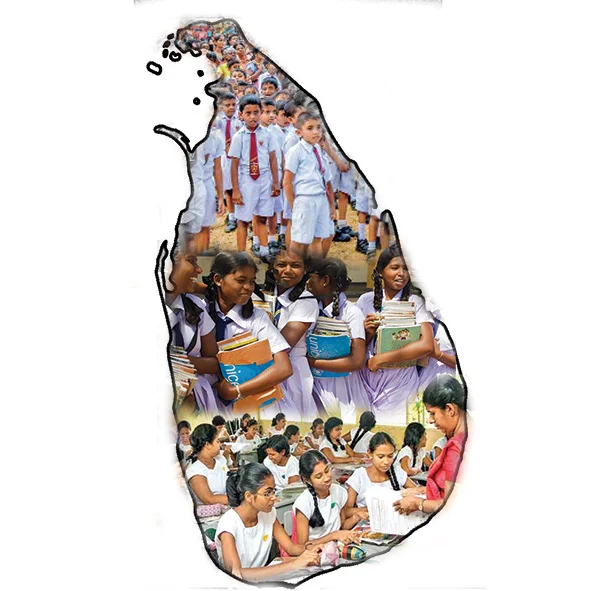
Sri Lanka was once at an economically comparable level with some of the world’s most developed countries in the 19th century. However, despite our country’s potential, we are still striving to fully develop. Many people often blame politicians, government officers, or various sectors for the situation. However, I believe the root cause of these issues lies not in any individual or group, but in the lack of good attitudes within our society.
We are investing significant resources into our education system, which is funded by the taxes of hard- working citizens. However, when we examine the outcomes, we realise that the academic achievements of our graduates alone are not enough. There are instances where professionals, despite having the necessary qualifications, fail to uphold ethical standards. In some cases, this even results in malpractice or harmful actions that damage our country’s reputation and progress. This highlights the gap between academic success and real-world responsibilities.
The education system, which is currently focused on competitive exams and rote learning, does not emphasise the development of attitudes and character in students. While our students are academically capable, many lack the qualities required to contribute positively to society. This lack of focus on social values, such as patriotism, selflessness and respect for elders, is holding us back from achieving the level of progress we deserve.
To address these concerns, I wrote to His Excellency, the President of Sri Lanka, on 24th September 2024, proposing education reforms that emphasise not only academic qualifications but also attitudes, ethics, and social responsibility. I suggested a holistic approach to university admissions and government recruitment, incorporating moral integrity, character, and extracurricular involvement, key traits for fostering well- rounded, responsible citizens. More importantly, I strongly recommended introducing a compulsory school subject, with both theory and practical components, focused on attitude development, which would be evaluated in university admissions. Encouraging extracurricular participation alongside academics will help shape ethical and socially responsible individuals.
I am pleased to inform you that the President, recognising the importance of these reforms, has directed the relevant ministries (by a letter dated 24th October 2024) to explore integrating these ideas into the education system. This marks a crucial step in transforming the values and attitudes of our youth for the nation’s benefit.
However, meaningful change requires collective effort. Parents, teachers, students, and citizens all play a role in shaping Sri Lanka’s future. Together, we must instill responsibility, ethics, and patriotism in the next generation. I invite you to share your thoughts and suggestions on further enhancing the values and attitudes of our youth. Your feedback will be invaluable in building a brighter future for Sri Lanka, one driven not just by knowledge, but by integrity and character.
Dr. Mahesh Premarathna
Research Fellow, National Institute of Fundamental Studies, Sri Lanka Email: mahesh.pr@nifs.ac.lk
-
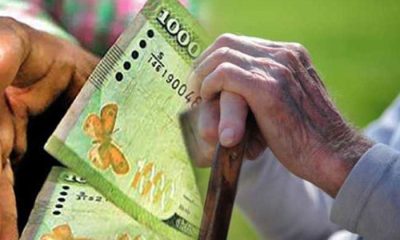
 News5 days ago
News5 days agoSeniors welcome three percent increase in deposit rates
-

 Features5 days ago
Features5 days agoThe US, Israel, Palestine, and Mahmoud Khalil
-
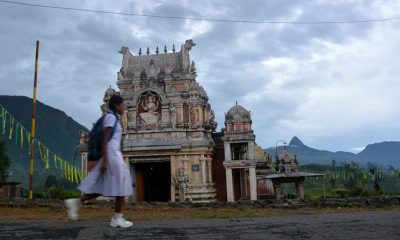
 News5 days ago
News5 days agoScholarships for children of estate workers now open
-
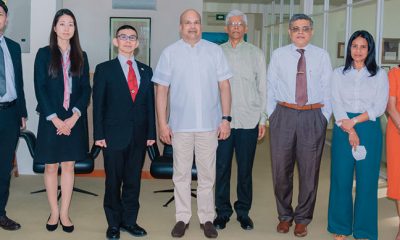
 News6 days ago
News6 days agoDefence Ministry of Japan Delegation visits Pathfinder Foundation
-
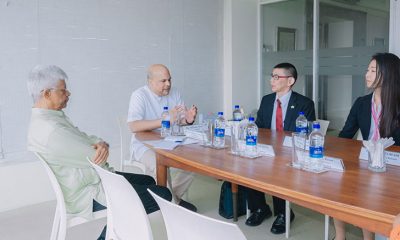
 News5 days ago
News5 days agoJapanese Defence Delegation visits Pathfinder
-
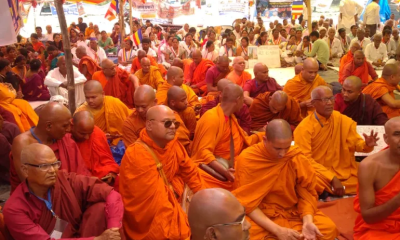
 Foreign News4 days ago
Foreign News4 days agoBuddhism’s holiest site erupts in protests over Hindu ‘control’ of shrine
-

 Editorial6 days ago
Editorial6 days agoWhen promises boomerang
-
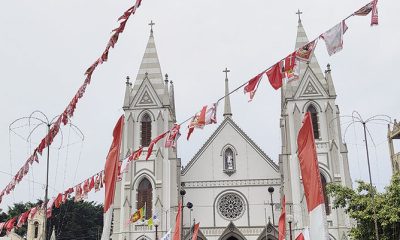
 News6 days ago
News6 days agoBan on altar girls upsets nuns, stirs talk on women’s church roles











